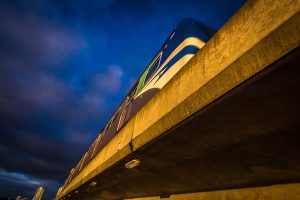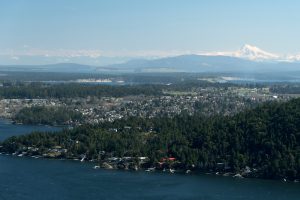March featured some good news and some bad news for British Columbia LNG advocates.
The relatively small Woodfibre LNG project has moved near the front of B.C.’s pack of nearly two dozen proposed liquefied natural gas projects, while the much larger Pacific NorthWest (PNW) LNG, poised for a final decision from Ottawa, has hit a snag with environmental officials.
The province recently announced the WoodFibre project had received environmental approval from the federal government. In Ottawa, the Minister of Environment and Climate Change Catherine McKenna issued a decision stating that the Woodfibre LNG project is "not likely to cause significant adverse environmental effects."
The federal decision follows the October 2015 provincial approval of the project and concluded the project’s environmental assessment review process.
"Receiving federal environmental approval marks the conclusion of more than two-and-a-half years of intensive work by the Woodfibre LNG team and our engineering, environmental, and shipping consultants," said Byng Giraud, country manager and vice-president, corporate affairs with Woodfibre LNG Limited, "something every member of the Woodfibre LNG team can be proud of."
Giraud indicated that if permitting steps go according to plan, the two-year build could start early next year.
The Woodfibre project underwent a substituted environmental assessment process, whereby the province’s Environmental Assessment Office (EAO) co-ordinated the review process on behalf of both the EAO and the Canadian Environment Assessment Agency (CEAA).
The next steps are for the proponent to obtain approvals and permits, including regulatory authorizations from Fisheries and Oceans Canada and Transport Canada.
While the approval is good news for the province’s plans to develop a robust LNG industry, Woodfibre is dwarfed in size by other proposals. Its facilities would export 2.1 million tonnes of LNG annually, while Pacific NorthWest LNG and LNG Canada plan to export around 15 million tonnes a year. The Pacific NorthWest project would cost around $36-billion while Woodfibre would be a $1.6 billion investment.
The Woodfibre project processing and export facility is located at the former Woodfibre pulp mill site, about seven kilometres
southwest of Squamish, B.C.
The project must meet all provincial and federal requirements, including environmental assessment conditions related to
pre-construction, construction, operation and decommissioning in order to responsibly manage potential effects associated
with the proposed project.
The Woodfibre LNG site is located on the traditional territory of Squamish Nation. In October 2015 Squamish Nation Council announced it had approved an Environmental Assessment Agreement and issued a Squamish Nation Environmental Assessment Certificate for the Woodfibre LNG project.
The agreement includes legally binding conditions that Woodfibre LNG Limited is required to meet for the project to move forward.
The project is moving ahead with design, awarding KBR a multi-phased contract for front-end engineering and design (FEED).
Under the terms of the contract, KBR’s Houston office will provide FEED services for the proposed liquefaction plant and export facility. This work will include FEED optimization, pre-FEED, FEED, and development of a fixed price offer for engineering, procurement and construction (EPC) services.
"KBR is a world leader in LNG engineering and design," said Giraud. "The award of the FEED contract to KBR ensures the Woodfibre LNG project is engineered and designed to world-class standards, and marks another important step towards
making the project a reality."
While Woodfibre’s process moved forward last month, Pacific NorthWest LNG’s Lelu Island site hit a snag. A long-awaited decision from Ottawa on the project has been delayed by at least three months.
According to a letter from the CEAA, new questions have arisen about the construction schedule.
According to the CEAA, Pacific North- West LNG officials explained to them early last month that it would not be possible to control in-water marine construction to specific times to limit impacts on herring spawning, salmon rearing, eulachon and marine mammal migrations, despite this being a proposed condition for approval. Lelu Island, near Prince Rupert, is at the mouth of the Skeena River, described in a letter by the CEAA as one of the largest and most diverse wild salmon watersheds in the world. Project officials informed the CEAA that the work "must generally be able to proceed on a continuous basis, night and day."
The CEAA stated the delay is to assess the impact of the demanding construction schedule on the local population and
environment.
Provincial officials, who have been anticipating the massive investment of an LNG industry, are eager to see the project move
forward.
"I’m confident that any remaining questions can be answered completely and quickly. They have to be. Jobs for British Columbians should not be held by unnecessary delays," said Rich Coleman, B.C.’s minister of energy and mines in a statement.
"After all, this just isn’t any project. At $36-billion and 18,600 jobs, PNW LNG would be the largest private sector investment ever in Canadian history."











Recent Comments
comments for this post are closed